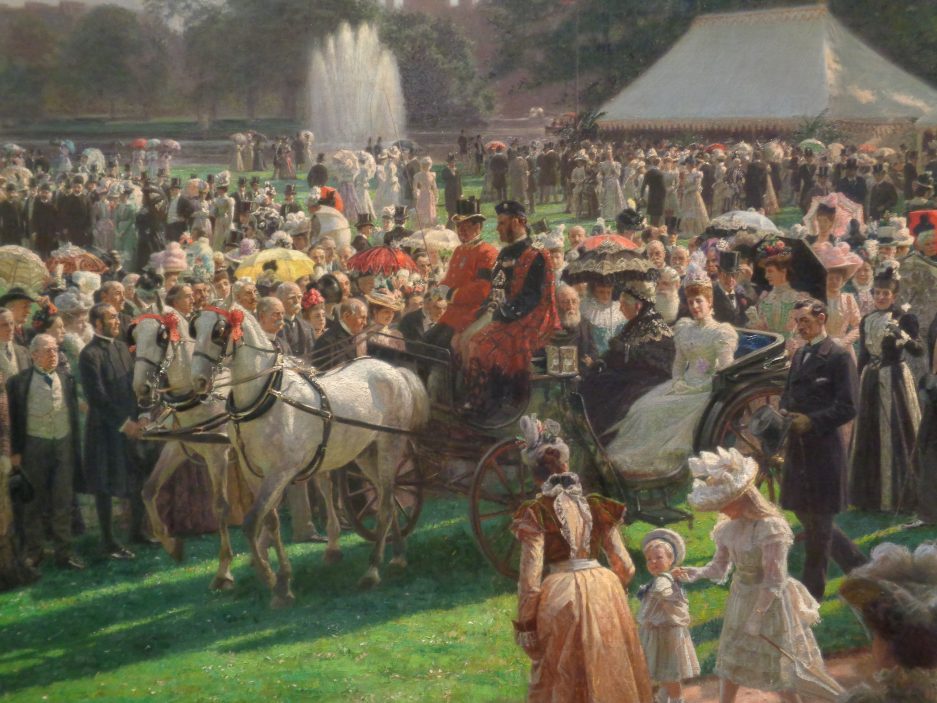The National Portrait Gallery’s final exhibition before it closed for renovations in 2020 was a retrospective of Cecil Beaton’s photography focusing on the so-called “Bright Young Things” and it seemed fitting that one of its two exhibitions on its recent reopening is devoted to one of Beaton’s contemporaries – Yevonde Cumbers Middleton (1893-1975) or Madame Yevonde as she became known.
Born to middle class parents, Yevonde stumbled upon photography as a career through her work with the Suffragette movement via selling and distributing literature. In her autobiography In Camera, she wrote that her foray into the suffragette movement and finally photography was partly due to her desire to earn her way after deciding early on that marriage and motherhood was not for her. After an apprenticeship with photographer Lallie Charles, Yevonde opened her own studio with her parents’ support which took off after the First World War.

She soon proved to be a canny businesswoman with an interest in technology to perfect her craft. Not satisfied with merely photographing society figures for publications like The Sketch, she experimented with colour photography through her utilisation of the Vivex process from the Colour Photography Limited company. This was a risky move as colour photography was not taken seriously, but her gamble paid off as she received commissions ranging from photos accompanying magazine articles, capturing the interiors of the Queen Mary and her photos of leading figures of the day including several peers & peeresses who were present at the coronation of King George VI and Queen Elizabeth in 1937.



The apogee of her engagement with the Vivex process was her series of photos entitled “Goddesses” based on a charity ball in 1935 where many of the guests were dressed as figures from Greek and Roman mythology. However, this engagement would come to an end in 1939 with the outbreak of the Second World War and closure of the Colour Photography Limited. For the rest of her life, Yevonde returned to black & white for portraiture using only colour for her commercial work such as creating book covers for Pan Publishing.
The exhibition draws on photographs from the NPG’s own collection together with a selection of her business cards, magazines that featured her photographs, samples of her commercial work, catalogues and equipment used for the Vivex colour process. On the plus side, we thought that the exhibition was interesting and informative, showing Yevonde as a pioneering photographer and businesswoman. She was also a rarity as following her marriage to journalist and playwright Edgar Middleton in 1920, he encouraged her to continue her career and even supported her by modelling for her portfolio. Her work also engaged with the leading artistic movements of the day such as surrealism and crucially chronicled the change in women’s roles – during the 1920s and 30s her subjects were society women, actresses, dancers and athletes while during the 1950s and 60s there were artists such as Dame Barbara Hepworth; which demonstrated the number of upper and upper middle class women entering the workforce or developing careers out of choice or necessity.
Our main criticism of the exhibition could be summed up in the phrase, “lots of faces” as many of the names such as Tilly Losch, Margaret Sweeny, Alexandra Haig and Sheila Milbanke would now be greeted with a shrug and a blank look. This goes to show that her photography was very much a product of its time with household names then now forgotten and consigned to obscurity. Frankly, and without wanting to detract from the considerable and impressive corpus of Yevonde’s work, the second half of the exhibition went a bit Butch Cassidy. You know the line – ‘who ARE these people?’
The “Goddesses” selection could have simply been abbreviated with photos from the set that were interesting and demonstrated Yevonde’s technical skill such as the triptych of the Duchess of Wellington. We would have also preferred to have seen more of her commercial work especially for Pan Publishing as the display of her cover for Ian Fleming’s On Her Majesty’s Secret Service was in our opinion another example of her view of photography as art.
In a speech in 1936, Yevonde declared that photographers should adapt the creed “be original or die” and throughout her career that spanned over a half century, she took this maxim seriously thereby leaving behind a body of work that remains as fresh and original as when they were first photographed.
Yevonde: Life and Colour is on at the National Portrait Gallery until 15 October 2023. For more information, please visit: https://www.npg.org.uk/whatson/exhibitions/2023/yevonde-life-and-colour/
The bloggers visited the exhibition on 26 July 2023, photos were taken by bloggers.
